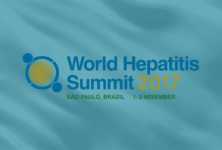Combination antiretroviral therapy (ART) administered during pregnancy decreases HIV transmission to the neonate over zidovudine alone, but increases the risk for adverse maternal and neonatal outcomes, according to data from a randomized controlled trial.
The findings “emphasize the need for continued research to assess ART in pregnancy to ensure safer pregnancies for HIV-infected women and healthier outcomes for their uninfected infants,” write Mary G. Fowler, MD, MPH, from Johns Hopkins University School of Medicine, Baltimore, Maryland, and colleagues. Dr Fowler and colleagues reported the results in the November 3 issue of the New England Journal of Medicine.
The researchers enrolled HIV-infected women at 14 sites in seven countries (India, Malawi, South Africa, Tanzania, Uganda, Zambia, and Zimbabwe). At enrollment, women were at 14 or more weeks of gestation and had CD4 counts of at least 350 cells/mm3. The women were randomly assigned into three treatment groups: the “zidovudine alone” group received zidovudine and single-dose intrapartum nevirapine plus a 1- to 2-week postpartum course of tenofovir and emtricitabine; the “zidovudine-based ART” group received zidovudine, lamivudine, and lopinavir-ritonavir; and the “tenofovir-based ART group” received tenofovir, emtricitabine, and lopinavir-ritonavir. All therapies were continued through 6 to 14 days postpartum.
Among the 3490 mother–infant sets included in the study, the researchers found that the rate of HIV transmission was significantly lower with combination maternal ART than with zidovudine alone (0.5% vs 1.8%; difference, −1.3 percentage points; repeated confidence interval, −2.1 to −0.4).
HIV-free infant survival was also found to be greater with zidovudine-based ART than with zidovudine alone or tenofovir-based ART.
Maternal plasma HIV levels were measured at trial entry, at week 4, and at delivery or postpartum week 1. CD4 counts were evaluated at week 12, delivery, and postpartum week 1, and blood chemistry values were obtained at trial entry and weeks 4, 8, and 12, and then every 8 weeks. These were also evaluated at delivery and 1 week postpartum. Infant HIV nucleic acid testing and assessment of laboratory values were performed between birth and 5 days and at week 1 (6 – 14 days of age).
The researchers note that the rate of maternal grade 2 to 4 adverse events was significantly higher with zidovudine-based ART than with zidovudine alone (21.1% vs 17.3%; P = .008). In addition, the study authors found that the rate of grade 2 to 4 abnormal blood chemical values (particularly elevations in the alanine aminotransferase level) was also higher among women receiving zidovudine-based ART compared with zidovudine alone (5.8% vs 1.3%; P < .001). Abnormal blood chemical values were also found to occur more often among women receiving tenofovir-based ART compared with zidovudine alone (2.9% vs 0.8%; P = .03).
In addition, adverse pregnancy outcomes (eg, low birth weight, preterm delivery) were more common among those in the zidovudine-based ART group compared with those in the zidovudine-alone group (40.0% vs 27.5%; P < .001). Similar results were also noted among women in the tenofovir-based ART group (34.7% vs 27.2%; P = .04). The researchers note, however, that no significant difference between the two ART regimens was observed.
Finally, the risk for infant death was found to be greater in the tenofovir-based ART group compared with the zidovudine-based ART group (4.4% vs 0.6%; P < .001).
Despite the promise of a decreased risk for HIV-transmission at the time of delivery, Dr Fowler and colleagues note that “the most efficacious and safest triple-drug ART regimens during pregnancy remain to be defined. Our findings emphasize the need for continued research to assess ART in pregnancy to ensure safer pregnancies for HIV-infected women and healthier outcomes for their uninfected infants.”
Funding for this study was provided through grants from the National Institute of Allergy and Infectious Diseases of the National Institutes of Health, the Eunice Kennedy Shriver National Institute of Child Health and Human Development, and the National Institute of Mental Health. The authors have disclosed no relevant financial relationships.
By Jennifer Garcia
N Engl J Med. 2016;375:1726-1737. Full text


 ПОИСК ПО САЙТУ
ПОИСК ПО САЙТУ  поиск по ресурсному центру
поиск по ресурсному центру 



